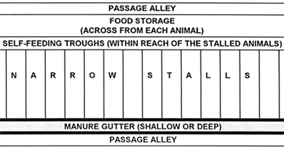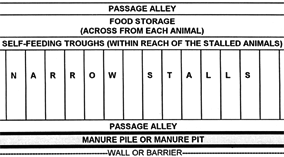
| |  |
| |
What was on the Ark? All of the pairs of animals that went on the Ark had to be genetically diverse so that every variety of animal would be able to descend from that pair. The amount of variety that could be produced from the original created kinds was expansive. It is possible that the representative pairs that went on the Ark were more generic then the species level. The evidence from extant species would indicate that most can be cross-bred with other species within that genera and in some cases, even within the same Family. In fact, biologists use the term "syngameon" to refer to an interbreeding unit among plants and animals. The syngameon may include several species and in many cases multiple genera. The scientific literature is replete with evidence of species interbreeding with other species. By extrapolating back to the origins of these syngameon units found today, one can postulate the original created kinds that must have been on the Ark. If the created kind was at the family level, then the number of animals on the Ark would have been around 2,000. Woodmorappe deliberately used the genus rank to calculate his feasibility study in order to err on the larger side. Based on the number of known extant and extinct animals, the Ark would have had to have held some 16,000 animals. Of these 16,000 animals, the average body size was that of a small rat. Only 11% of the animals on the Ark were substantially larger than sheep. Food and Water Requirements The ability to preserve foodstuffs was known even in Biblical times (Leviticus 25:21-22 and Genesis 41:34-36). Ancient Romans and Egyptians knew how to preserve grains for decades. Dehydration of meats is also an ancient and relatively simple technique. Dried meat has almost the same nutritive value as fresh meat. Animals in captivity can be trained to eat preserved meat. Some fresh foods can last up to a full year, such as root crops (potatoes). The wax gourd (Benincasa hispida) is unusual in that it can keep a whole year in a fresh state without any preservation. Many simple preservation techniques were also available, such as storing in honey, syrup, or oil. Eggs can be soaked in brine to preserve them. There are many animals that could have been used as a source of fresh meat. A small quantity of live animals for food could have been brought on board. Giant tortoises are easy to keep for long voyages because they can go for several months without food or water. Also, some fish and frogs will aestivate for up to several years encased in a mud cocoon without reviving until they are placed in water. These live animals could have been brought on board the ark without any care requirements and then used as live food. Even though the possibility existed to bring live fish on board, they may not have been necessary. Many piscivores have been reared in captivity using substitutes such as fish pellets or meat soaked in cod liver oil at times when fresh fish was unavailable to the zoos. Most bats can be reared on fruit juice instead of whole fruit. Fruit jellies are also used in zoos. Nectar and fresh fruit can be substituted with sugar or honey mixed with other nutrients. Dried fruits and reconstituted dried fruit are commonly used in modern zoos and were historically used by the ancient Romans in large aviaries. In some instances, breads, boiled brown rice and raisins, cheese, molasses, etc. have been used in place of fruit for some birds. Even very specialized diets can be simulated in captivity. King cobras and other ophiophagous snakes will eat meat if it is stuffed in sloughed snake skin. Both the red and the giant panda will eat a variety of foods such as rice-based gruel, sweet foods, sugar cane and corn stalks. Koalas have been known to eat Monterey pine needles and mistletoe. They will also eat more common foods that have been soaked in Eucalyptus oil. Koalas have survived for up to one year on these alternative diets and their health will improve when they return to fresh Eucalyptus. "It is interesting to note that there is a Jewish tradition of Noah breeding insect larvae (presumably mealworms) in bran (Ginzberg 1909, 1988, p. 330)[1] for an animal which would not eat common foods."[2] Fruit flies could have been raised on the rinds of the wax gourd (mentioned earlier). Mealworms and earthworms can easily be raised in manure and collected with burlap layers. Mass cultivating insects in tiered containers would have taken relatively little space on the ark. Using 1% of floor space, they could have produced 88 - 375 kg of mealworms per day. The amount of dry matter food on the ark was approximately 1,990 tons. The volume of dry grains and fruits, dried meat and fish would total only 6 - 12% of the interior volume of the ark. Water, assuming none was collected from rainwater, was stored in containers. The water stored was approximately 4 million liters which comprised only 9.4% of the Ark's volume. Water dispensing mechanisms have been used by ancient Romans for specialized animals such as pigeons. Animal Husbandry The care of the animals would have been split between the eight people on the ark, requiring each person to care for on average 2,000 animals per day. In modern laboratories and factory farms, large numbers of animals can be cared for by a small crew. On average, one worker can care for 6,000 lab rats, 3,800 pigs, 5,000 cattle, or 30,000 laying hens. Under rustic conditions, one worker can maintain 840 pigs, 500 steers, 2,000 pigeons, 1,000 guinea pigs or 9,000 laying hens. Although the ark did not have the convenience of modern technology, they also were not concerned with propagation, egg-collecting, long-term maintenance of equipment or extensive cleaning. Many labor saving techniques were probably used, such as overhead storage of food, semi-automatic feeding systems, rolling carts and wheelbarrows. Water was probably not delivered to each animal individually. Water troughs and rudimentary plumbing is an ancient technique known by the Egyptians and Chinese. There is even an apocryphal account of pipes being used to move water within the Ark.[3]
 Figure 4a Large Animals in Stalls with Attached Manure Gutter Excrement may have been left on the floor in deep layers of bedding or in pits below slatted cages [Figure 4a from the book]. Another possibility is that it was removed by the workers from the individual enclosures to manure troughs running parallel to each enclosure [Figure 4b from the book]. Manure left in troughs could have been decomposed by earthworms and insects. A third alternative is that the manure collected in the troughs was disposed of off of the Ark. Waste could have been removed by sloping channels that drain out the Ark through an outfall. Sewer outfalls have been discovered in Scotland that date back to 3,000 BC, which would have been shortly after the flood. Based on the total tons of biomass producing waste, the daily production of excreta would near 12 tons. This amount would require only 13 man/hours to shovel up and dump overboard (out of a total 80 man/hours per day available).
 Figure 4b Large Animals in Stalls with Manual Removal of Excreta The above calculations are based on no dormancy of the animals. However, there is ample evidence that animals will experience dormancy, torpor, and hibernation even without any environmental changes. The conditions on the ark probably encouraged dormancy. Lower temperatures, less ambient light, and the lack of physical exertion would all tend to lower the amount of food intake and excreta production. If the dormancy averaged every other day for the duration of the Flood, the labor required to maintain the animals would be cut in half. Even minimal reductions in metabolism due to the sedentary conditions could have a significant impact on labor saving. Ark design The window at the top of the Ark (Genesis 6:16) is not a single window but a series of windows around the top of the ark, 1 square cubit each. The window openings totaled 146 m2. Air would have circulated through the Ark [figure 5 from the book] through the convection movement of the warm body heat inside and the cool breeze coming from off of the water outside. The main necessity to ventilate in intensive animal housing is not the removal of CO2, ammonia, and methane, but the removal of excess body heat produced by the mammals and birds. An external wind of only 5 km per hour through an opening of .093 m2 would be enough to recirculate the air 5 times per hour in the Ark. The Window opening of 146 m2 far exceeded this requirement. The actual wind velocity was probably much higher than km/hr during the flooding and drying winds.
2. Woodmorappe, John. 1996. Noah's Ark: A Feasibility Study. Institute for Creation Research, El Cajon, California, p. 106. Return to Text 3. Wellnitz, M. von. 1979. "Noah and the Flood: the Apocryphal Traditions." Creation Research Society Quarterly 17(3): 167-8. 1979, p. 45. Return to Text |
| | | Summary & Review | Practice Examination | Sitemap | | Advanced Creationism Home | The Dinosaur Mystery Solved Home| Copyright © 1999 Institute for Creation Research |